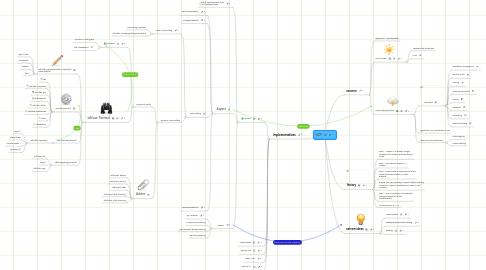AOP
Door László Hirdi


1. implementations
1.1. AspectJ
1.1.1. AspectJ Development Tools (AJDT) Eclipse plugin
1.1.2. Aspect
1.1.2.1. Aspect associations
1.1.2.2. Privileged aspects
1.1.2.3. cross-cutting
1.1.2.3.1. Static cross-cutting
1.1.2.3.2. Dynamic cross-cutting
1.1.2.4. Aspect precedence
1.1.3. weaver
1.1.3.1. ajc compiler
1.1.3.2. compile time weaving
1.1.3.3. post-compile (binary) weaving
1.1.3.4. load time weaving
1.2. AspectWerkz
1.3. Spring AOP
1.4. JBoss AOP
1.5. AspectC++
2. concern
2.1. separation / modularization
2.2. core concern
2.2.1. separated by arhitecture
2.2.2. OOP
2.3. cross-cutting concern
2.3.1. examples
2.3.1.1. transaction management
2.3.1.2. security check
2.3.1.3. caching
2.3.1.4. concurrency control
2.3.1.5. tracing
2.3.1.6. validation
2.3.1.7. monitoring
2.3.1.8. resource pooling
2.3.2. typed into core code without AOP
2.3.3. clean code conciderations
2.3.3.1. code tangling
2.3.3.2. code scattering
